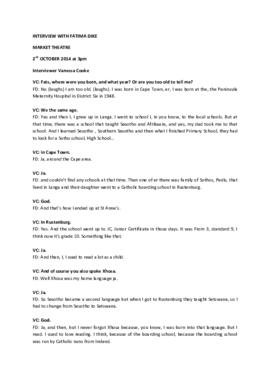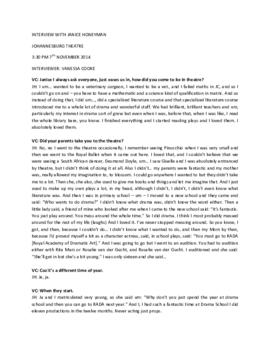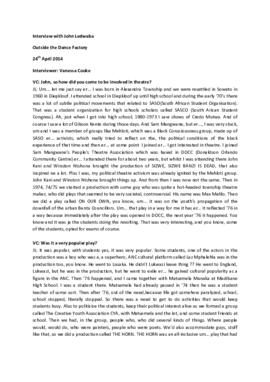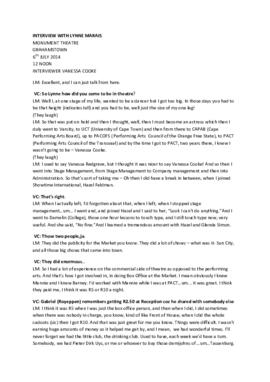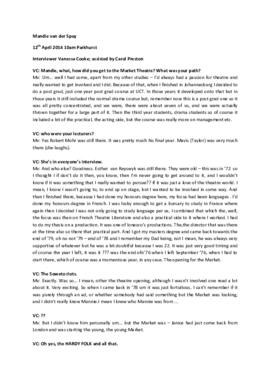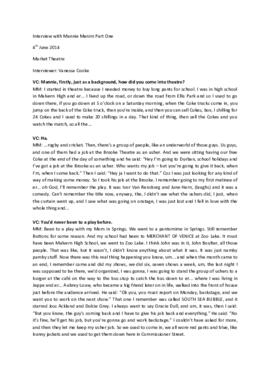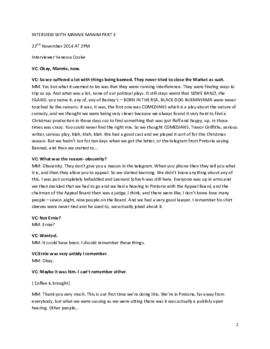Identity area
Reference code
Title
Date(s)
- 2014-2015 (Creation)
Level of description
Fonds
Extent and medium
17 interviews, MSWord and audio files
Context area
Name of creator
Administrative history
The project, which was managed by Vanessa Cooke, due to the depth of her institutional knowledge of the history of the Market Theatre, was supervised by Cynthia Kros, at the time Professor of Heritage Studies in the Faculty of Humanities, University of the Witwatersrand, and assisted by Carol Prestons.
Name of creator
Administrative history
The Market Theatre in Newtown, Johannesburg, was founded in 1976 by Mannie Manim and Barney Simon. It was housed in what used to be Johannesburgs Indian Fruit Market, built in 1913. The Market Theatre became an icon of the struggle against Apartheid since its inception in 1976. The practitioners that worked there between the years 1976 and 1994 were actively involved in the struggle against Apartheid, and much of the work that was developed and performed then was Struggle Theatre. This then in its entirety forms a very important part of South African history, and documents work that was written and performed in the light of cultural boycotts at the time. Any archive that exists on The Market Theatre that includes activities over these years serves as both theatre archive and Apartheid archive.
The Market Theatre is now administered through The Market Theatre Foundation, together with The Market Laboratory, The Market Photo Workshop and the Windybrow Arts Centre.
Archival history
Immediate source of acquisition or transfer
Content and structure area
Scope and content
It has been recognized that there is no comprehensive and complete archive on The Market Theatre that covers the years mentioned above, and this is a serious gap in historical recording of knowledge in South Africa. The archives that exist at present are housed in various places across the country. These include the Wits Historical Papers, The Star Newspaper, NELM and the State Theatre archive. This project proposed filling that gap by initially establishing what is missing in the various existing archives, negotiating with custodians of said archives in order to possibly bring original material together under one roof or to make copies of this material. The project also aimed at conducting interviews across the country with practitioners who worked at The Market Theatre during that time in order to compile a living memory that will be included in the archive, before this valuable knowledge is lost.
This archive will enable those researchers, academic or otherwise, to access knowledge on the art of that era, information on Apartheid and the arts, and The Market Theatre in general. There is no other archive that specifically addresses performance during the Apartheid era. It is thus vitally important that this history is readily available to anyone who might need to access it. It is also imperative that this history is recorded before it is lost. Innovation lies in the content of the archive.
Appraisal, destruction and scheduling
Accruals
System of arrangement
Conditions of access and use area
Conditions governing access
Conditions governing reproduction
Permission to publish has to be obtained from the Market Theatre Oral History Project, or alternatively from The Market Theatre Foundation.


